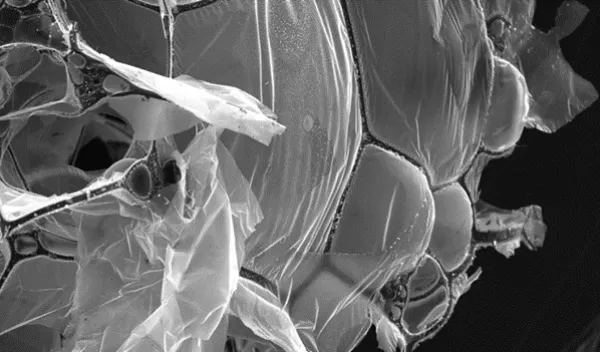
Researchers cook up a new way to remove microplastics from water
Researchers at Princeton University have found a way to turn a common breakfast food into a new material that can cheaply remove salt and microplastics from seawater.
The researchers used egg whites to create an aerogel, a lightweight and porous material that can be used in many applications, including water filtration, energy storage and sound and thermal insulation.
The research was supported in part by the U.S. National Science Foundation through a grant to the Princeton Center for Complex Materials. Results of the research are published in Materials Today.
Sitting in a meeting one day, engineer and lead author Craig Arnold had an idea. "I was sitting there, staring at the bread in my sandwich," said Arnold. "And I thought, this is exactly the kind of structure we need." He asked his lab group to make different bread recipes, mixed with carbon, to see if they could recreate the aerogel structure he was looking for. After much testing, the team found their answer: egg whites. "It was the proteins in the egg whites that were leading to the structures we needed," Arnold said.
Egg whites are a complex system of almost pure protein that — when freeze-dried and heated to 900 degrees Celsius in an environment without oxygen — create a structure of interconnected strands of carbon fibers and sheets of graphene. Arnold and his co-authors showed that the resulting material can remove salt from seawater with 98% efficiency and remove microplastics with 99% efficiency.
Other proteins could also create this interconnected structure, which means that the material could potentially be produced in large quantities relatively cheaply and without impacting the food supply. A next step is to refine the fabrication process so it can be used in water purification on a larger scale.
While Arnold sees water purity as a "major grand challenge," it is not the only potential application. He is also exploring other uses related to energy storage and insulation.
The research included contributions from collaborators in chemistry and biological engineering who helped identify the transformation mechanism of the egg white proteins at the molecular level. "It's one thing to make something in the lab," said Arnold, "and it's another thing to understand why and how."
